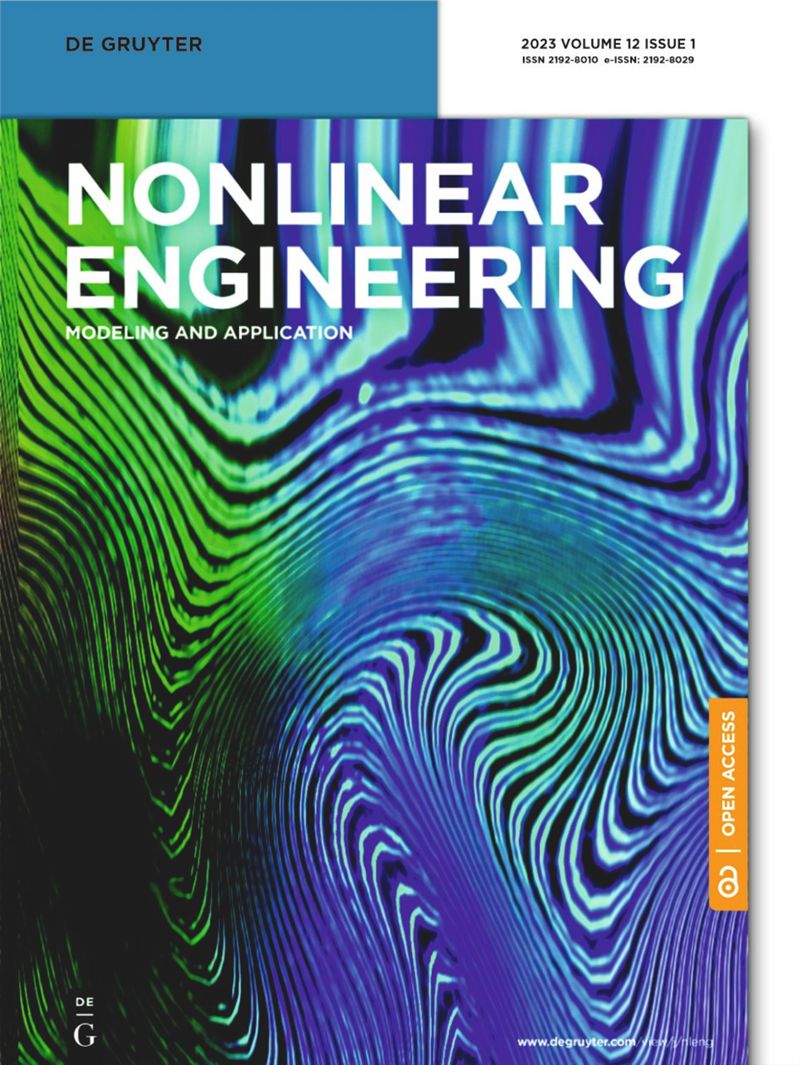基于流固耦合分析的换热器弹性管束振动响应数值分析
IF 1.5
Q2 ENGINEERING, MECHANICAL
引用次数: 0
摘要
摘要管束式换热器是在两种温度不同的流体之间进行热量交换的典型换热设备。通过该设备,一种流体可以冷却,另一种流体可以加热,以满足各自的需求。该设备广泛应用于化工、石油、制药、能源等工业部门,是化工生产中不可缺少的重要设备之一。为了提高换热器的传热性能和使用寿命,提出了一种基于流固耦合分析的换热器弹性管束振动响应数值分析方法。采用流固耦合的弱耦合方法,数值研究了不同管排间距和不同管排数换热器中壳侧流体对多排弹性管束的振动响应,比较分析了壳侧流体和管侧流体对弹性管束振动响应的影响。结果表明:当H = 40 mm时,测点振幅的最大相对误差为43.36%,当H = 70 mm时,测点振幅的最大相对误差为10.17%;对于接头IV, H = 40 mm时监测点振幅的最大相对误差为31.71%,H = 70 mm时为24.08%。这是因为当H较小时,管束排之间的相互作用较强,因此振幅随管束数的增加而剧烈变化。本文提出的粗算和精算分步计算策略,可以大大减少计算时间,提高计算效率。本文章由计算机程序翻译,如有差异,请以英文原文为准。
Numerical analysis of vibration response of elastic tube bundle of heat exchanger based on fluid structure coupling analysis
Abstract A tube bundle heat exchanger is a typical heat exchange equipment that exchanges heat between two fluids with different temperatures. Through this equipment, one fluid can be cooled down and another fluid can be heated up to meet their respective needs. The equipment is widely used in chemical, petroleum, pharmaceutical, energy, and other industrial sectors, and is one of the indispensable and important equipments in chemical production. To improve the heat transfer performance and service life of the heat exchanger, a numerical analysis of the vibration response of the elastic tube bundle in the heat exchanger based on fluid–structure coupling analysis is proposed. Using the weak coupling method of fluid–structure coupling, the vibration response of multiple rows of elastic tube bundles induced by shell side fluid in a heat exchanger with different tube row spacing and different tube row numbers is studied numerically, and the effects of shell side fluid and tube side fluid on the vibration response of elastic tube bundles are compared and analyzed. The results show that the maximum relative error of monitoring point amplitude is 43.36% when H = 40 mm and 10.17% when H = 70 mm. For connection IV, the maximum relative error of monitoring point amplitude is 31.71% when H = 40 mm and 24.08% when H = 70 mm. This is because when H is small, the interaction between rows of tube bundles is strong, so the amplitude changes violently with the number of the tube bundle. The step-by-step calculation strategy of rough calculation and actuarial calculation proposed in this article can greatly reduce the calculation time and improve the calculation efficiency.
求助全文
通过发布文献求助,成功后即可免费获取论文全文。
去求助
来源期刊
CiteScore
6.20
自引率
3.60%
发文量
49
审稿时长
44 weeks
期刊介绍:
The Journal of Nonlinear Engineering aims to be a platform for sharing original research results in theoretical, experimental, practical, and applied nonlinear phenomena within engineering. It serves as a forum to exchange ideas and applications of nonlinear problems across various engineering disciplines. Articles are considered for publication if they explore nonlinearities in engineering systems, offering realistic mathematical modeling, utilizing nonlinearity for new designs, stabilizing systems, understanding system behavior through nonlinearity, optimizing systems based on nonlinear interactions, and developing algorithms to harness and leverage nonlinear elements.

 求助内容:
求助内容: 应助结果提醒方式:
应助结果提醒方式:


